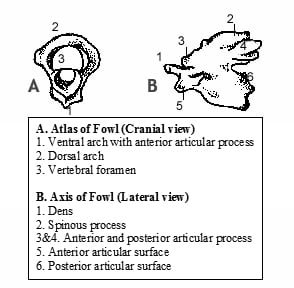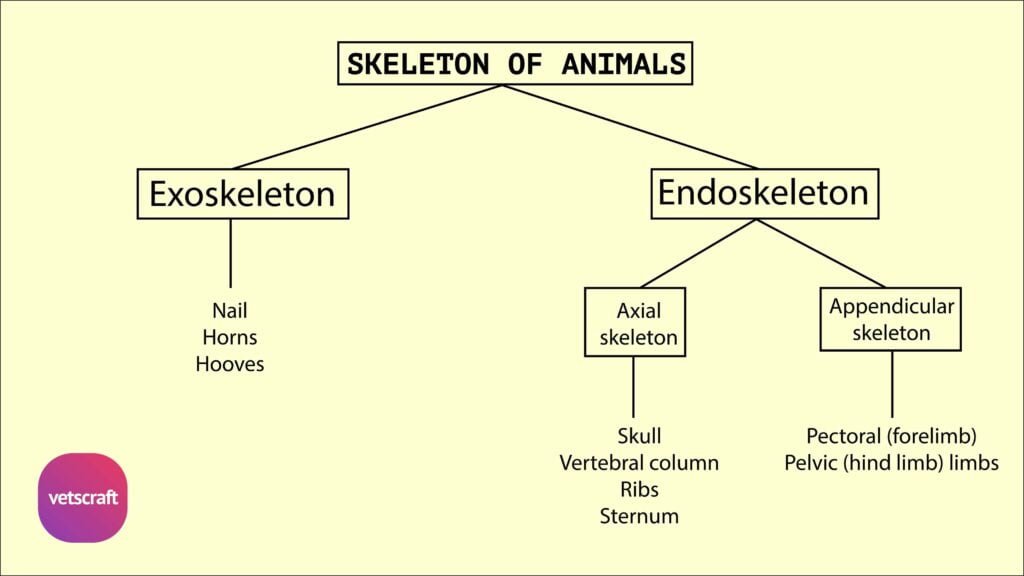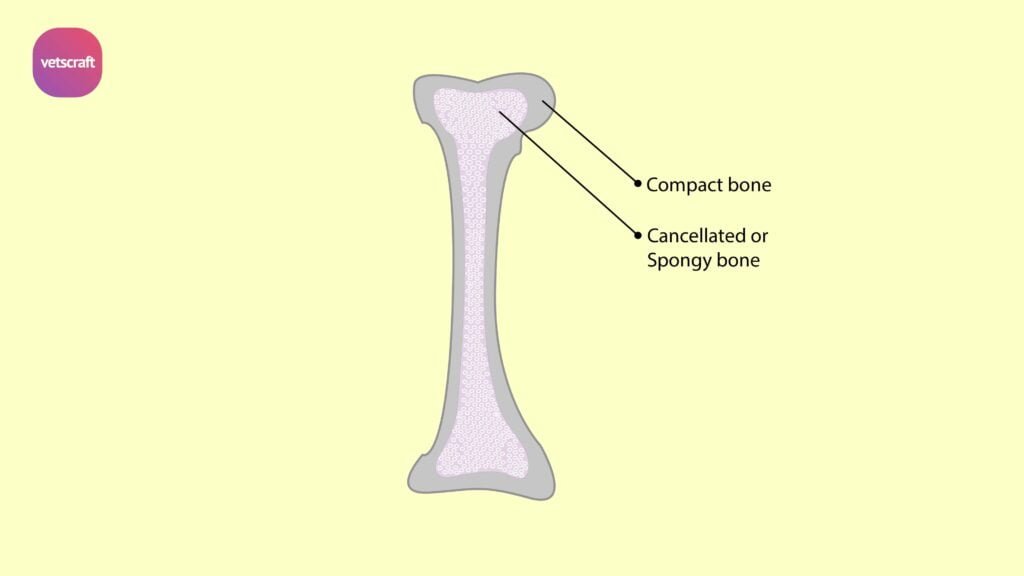TABLE OF CONTENTS
Anatomy of Axis Vertebra (Vertebra Dentata) in Animals
The axis vertebra, also known as vertebra dentata, is the second cervical vertebra (C2) in animals. It is uniquely adapted to support rotational movement of the head by forming the atlantoaxial joint with the atlas (C1). This joint allows the head to pivot from side to side.
The axis is distinguished by a prominent dens or odontoid process, which projects forward to articulate with the atlas and is secured by strong ligaments.
Axis of Ox
The axis is the longest of the vertebrae. It is an atypical vertebra. It is also called the vertebra dentata due to a tooth-like process called the dens, present on the anterior aspect of the centrum. The anterior articular processes are absent.

The body of the axis is the longest. The anterior end of the body presents centrally the dens or odontoid process.
The dens represents the body of the atlas, which gets fused with the body of the axis during development.
The process is spout-like, wide, and has a convex articular surface below for articulation with the atlas.
Its dorsal (superior) face is concave and rough for the attachment of the odontoid ligament (ligamentum dentis).
The two surfaces are separated by a sharp convex edge, which may be notched in its centre. On each side of the root of this process, the anterior end of the body presents a nearly flat articular surface, which is continuous with the ventral face of the dens, and this articular area articulates with the posterior articular surface of the atlas.
The posterior extremity of the body presents the usual concavity for the anterior extremity of the third cervical vertebra. The pedicles present the usual posterior notches, but in place of the anterior ones are large oval intervertebral foramina for the exit of the second cervical spinal nerves.
The anterior articular processes are absent, and the posterior pair resembles those of the succeeding vertebrae. The transverse processes are small, undivided, and project backwards.
The foramen transversarium, when present, is in the form of an osseous canal passing through the root of the transverse process, having anterior and posterior openings.
The spine is a very large and strong process. Its summit is narrow in front but thickens and widens posteriorly and serves for the attachment of the lamellar portion of the ligamentum nuchae and muscles.
The ventral spine is in the form of a ridge, becoming tuberculate at its posterior end.
Comparative Anatomy of Axis
The anatomy of the axis vertebra varies among domestic animals, reflecting differences in neck mobility and head carriage.
Sheep and Goat
- The spinous process of the axis in sheep and goat is not enlarged posteriorly.
Horse
- The body of the axis is larger in horses.
- The dens is longer, narrower, and more pointed (conical).
- The anterior extremity presents an undulating, saddle-shaped articular area.
- The spine is more massive and divides posteriorly into two ridges, which terminate on the posterior articular processes.
- The transverse process is thinner.

Pig
- The dens is in the form of a thick cylindrical rod in the case of the axis of the pig.
- The axis has a large spinous process directed upward.nd backward.
Dog
- The dens is rounded, very long, and reaches almost to the occipital bones in the case of the axis of the dog.
- The anterior articular areas, which flank the dens, are condyloid and very oblique.
- The spine is of great size and overhangs the dorsal arch of the atlas.
- The anterior notches are large and are never converted into foramina.
Rabbit
- The axis of the rabbit is comparatively shorter than that of the ox.
Fowl

- The anterior articular processes are present, and they articulate with the facets on the posterior aspects of the dorsal arch of the atlas in fowl.
- The body presents, below the dens, a concave articular area for articulation with the ventral arch of the atlas.
- The dens articulates with the occipital condyle.
- The dorsal and ventral spines are present.
- The transverse processes are absent.

